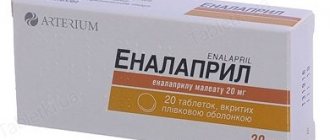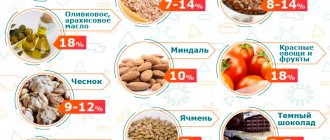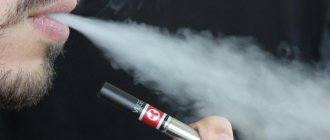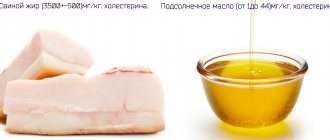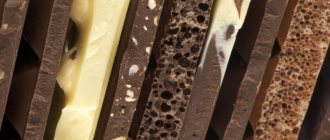Vascular diseases and high blood pressure are common among alcohol drinkers. Most believe that alcohol dilates blood vessels and lowers blood pressure, although doctors warn of the opposite effect.
Before you take a glass, it’s worth understanding how alcohol works, dilates or constricts blood vessels.
The mechanism of action of alcohol on blood vessels
The influence of alcohol is a complex and controversial issue. The action depends on many factors:
- on the amount of drink;
- from his appearance;
- from the fortress;
- on the person’s age;
- frequency of use;
- from genetics;
- from the initial state of health, etc.
However, there are general mechanisms of action that you need to know about in order not to harm the vessels, but, on the contrary, to bring some benefit.
Alcohol is absorbed into the blood very quickly . This is also the basis for the fact that when used in tinctures it makes the absorption of herbal preparations very effective.
This form of use also has a side effect - the appearance of ethanol in the blood, a substance harmful to the body. But the dosage of tinctures is, as a rule, minimal, so the harmful effects are also almost absent.
Alcohol as a drink is another matter. Its action goes through several stages:
- Expansion of the lumen of the arteries. Ethanol reduces the tone of blood vessels, they dilate and the pressure decreases. This is where the idea emerged that alcoholic drinks fight hypertension.
- Circulatory disorders. As ethanol enters the blood, the pressure decreases, and the blood pressure is not enough to supply the periphery. As a result, the heart rate increases, and the heart, on the one hand, receives an extra load, and on the other, although the blood passes through the heart faster and loads it unnecessarily, it does not have time to reach the periphery due to reduced pressure. This is why, some time after drinking alcohol, your hands and feet begin to freeze. For the same reason, it is so dangerous to warm up with alcohol in the cold: the feeling of warmth comes only for a while, then the person freezes. This is how circulatory disorders manifest themselves.
- Constriction of blood vessels and increased blood pressure. About half an hour after drinking alcohol, and especially as it continues to enter the body, the blood vessels narrow and the pressure inevitably rises. Thus, a hypertensive crisis can easily occur.
The diagram presented above concerns the consumption of alcoholic beverages in large quantities and without any additives. Alcohol tinctures act differently, since alcohol is contained there in homeopathic doses.
Possible consequences
Regular drinking of large amounts of alcohol often causes serious complications. Negative consequences are due to a number of factors.
First of all, it concerns the adverse effects on the cardiovascular system. After alcohol penetrates into the blood, the vessels alternately narrow and dilate, this continues until acetaldehyde is completely released from the body. Thus, they wear out quickly.
If you abuse alcohol, the blood vessels may at some point not be able to withstand constant pressure fluctuations and burst. This causes the development of strokes, heart attacks, and hemorrhages. The formation of arrhythmia, thrombosis and varicose veins may be observed.
Often in alcoholics, drinking alcohol is accompanied by a sedentary lifestyle and abuse of tobacco products. In this situation, the heart and blood vessels suffer twice as much.
What happens to the brain when consumed?
As for the vessels of the brain specifically, their narrowing after the tone is removed from them is fraught with spasm.
In addition to such unnatural “gymnastics” under the influence of ethanol, the vessels of the head become more fragile and permeable, the brain does not receive the required amount of oxygen , and brain cells die in large numbers.
In addition, alcohol is very dangerous for red blood cells. Touching the walls of arteries and veins, they receive a negative charge, thanks to which they repel and do not stick to each other.
Alcohol destroys the negative charge, and red blood cells begin to stick together. In this state, they simply cannot penetrate the capillaries.
The capillaries do not supply the brain cells with oxygen, they begin to collapse and die en masse - this is what manifests itself in a state of intoxication. Below you will find out which alcohol dilates the lumens of blood vessels and which narrows them.
The influence of strong alcohol
It doesn’t matter whether you drink strong or weak alcohol, the effects of alcohol depend on the following factors:
- The volume taken on the chest (a larger amount increases blood pressure).
- Age. Over the years, the body weakens, alcohol-containing drinks cause problems with the kidneys and liver.
- Regularity of alcohol consumption.
The complete exclusion of strong drinks is recommended for people with vegetative-vascular dystonia, neuroses and endocrine pathologies.
Effects on the brain
People who abuse alcohol are 6 times more likely to suffer from cerebral vascular pathologies. They are diagnosed with a number of ailments:
- Encephalopathy is a disease accompanied by the destruction of brain cells in the head under the influence of alcohol.
- Ischemic stroke is an acute circulatory disorder accompanied by necrosis of a portion of the brain.
- Vascular atherosclerosis is damage to blood vessels as a result of the deposition of lipids on their inner surface.
- VSD is a disorder based on a violation of the regulation of vascular tone by the autonomic nervous system.
All pathologies occur in a severe form and are accompanied by mental disorders; it may take more than three years to restore a normal state.
Under the influence of alcoholic drinks, the permeability of blood vessels in the head increases, which often causes swelling.
Red blood cells are destroyed, which provokes starvation of the brain, since it receives insufficient oxygen and nutrients. This in turn leads to the death of nerve cells and the cerebral cortex is affected.
Review of the 7 most popular drinks
The use of specific drinks, which, in addition to alcohol, contain other components, has even more nuances.
Red wine
If the measure is observed, then red wine really benefits the blood vessels, brain and heart.
This is what happens to blood vessels when drinking red wine:
- wine dilates the lumens of the arteries and slightly reduces pressure;
- contains antioxidants quercetin and resveratrol, which protect against premature aging and help resolve cholesterol plaques and blood clots; antioxidants are found only in low-alcohol drinks;
- increases the amount of “good” cholesterol in the blood;
- according to one version, it helps destroy certain types of cancer cells, thanks to ellagic acid;
- relieves inflammation and fights tumors, thins the blood and prevents platelet aggregation, helping to protect against thrombosis, thanks to resveratrol;
- reduces blood sugar levels and appetite in case of excess weight, helps avoid the occurrence and development of type 2 diabetes;
- in the fight against vitamin deficiency, anemia, blood loss, it is a source of fructose, organic acids, vitamins, and a large number of essential microelements; improves carbohydrate, nitrogen and mineral metabolism;
- unlike sugary drinks, it reduces the likelihood of kidney stones and fights them if they already exist.
Dry red wine is one of the 20 most beneficial foods for blood vessels.
Doctors have long noticed that the French who regularly drink red wine are less likely to suffer from cancer and other diseases. But proponents of this theory do not always mention two important factors:
- We are talking only about natural, unsweetened and unfortified red wine. This wine is not to everyone’s taste, but, alas, only it has healing properties.
- When talking about the “regular” consumption of a “glass of wine”, many do not take into account the genetic, age and other individual characteristics of a person. Regularly does not mean three times a day: for a Russian, for example, depending on genetic predisposition, gender and age, consuming 1-3 times a week is considered regular. And a “glass” of wine is not 200 or 300 g, but according to various opinions, 50-150 g of wine per serving.
According to one version, natural red wine has a positive effect on the functioning of the parts of cells responsible for storing energy, called mitochondria.
White wine
Unlike red wine, white wine is made from fruits and other berries, and does not have all the benefits of red wine. However, white also has a number of beneficial properties for the cardiovascular system, provided, of course, that the wine is unsweetened and unfortified.
Here's what white wine does:
- improves brain function, strengthens memory;
- prevents the development of Alzheimer's disease;
- slightly lowers cholesterol levels, strengthens the walls of blood vessels and heart muscle, reduces the likelihood of heart disease;
- delays the aging of the heart and blood vessels, according to some hypotheses, better than red, due to the better functioning of antioxidants;
- contains tirasol and hydroxytirasol, which help maintain slimness, which is very important for diseases of the cardiovascular system.
Cognac
Cognac, like red wine, is made from grapes. But it loses some useful properties due to its high degree of strength. For example, the amount of antioxidants in cognac is much lower.
In addition, cognac is good for the heart and blood vessels with a very minimal dosage, unlike wine: only 30-50 g will have a beneficial effect on the cardiovascular system. In particular, cognac in minimal doses:
- relieves vascular spasms, reduces tension;
- cognac has vasodilating properties and lowers blood pressure;
- dissolves blood clots and fatty deposits in the arteries, prevents the development of atherosclerosis;
- makes blood vessels more elastic;
- infused in oak barrels, due to the interaction of cognac alcohols with wood, it becomes a source of useful substances that reduce the permeability of the walls of blood vessels;
- increases immunity by influencing the hematopoietic organs, producing leukocytes or white blood cells responsible for immunity.
- enhances brain activity, especially when combined with coffee.
Vodka
Vodka is a strong alcoholic drink, its composition is only ethyl alcohol with water, there are no other components that can be useful for blood vessels. Therefore, vodka does not have the beneficial properties that wines and cognac have.
If we consider the effect of vodka on blood vessels, then, as is the case with any alcoholic product, we can speak of the health benefits of vodka in minimal quantities only as a means of one-time lowering of blood pressure.
An amount of more than 30-50 g at a time ceases to have a therapeutic effect and leads to the opposite consequences: increased blood pressure, vasospasm and provocation of atherosclerosis.
Regular use is generally dangerous. Therefore, as a medicine for blood vessels, the drink can be consumed once or as a means of extracting beneficial properties from plants, that is, as an ingredient in medicinal tinctures. But tinctures made with alcohol, vodka and wine are not automatically classified as drinks, but become a medicinal drug, since they are consumed literally drop by drop, and when mixed with other ingredients, the dosage is symbolic.
Also learn about the effects of beer on the cardiovascular system.
Whiskey
A strong drink made from malt and barley, it has all the properties of an alcoholic product that lowers blood pressure and helps the functioning of brain vessels when consumed in small doses.
Occasional whiskey consumption:
- reduces blood cholesterol levels;
- prevents increased blood clotting;
- thanks to ellagic acid, it prevents aging, the likelihood of Alzheimer's disease, and reduces the risk of cancer;
- strengthens brain vessels;
- when consumed periodically in an amount of 30-50 ml, it prevents many cardiovascular diseases.
Rum
The effect of rum on the body is close to the effect of cognac. This is an alcoholic drink that is prepared from cane syrup and molasses, fermented and undergoes aging.
But its strength, just like in the case of cognac, requires careful handling and consumption in small doses. Thus, rum can have a beneficial effect on the cardiovascular system , in particular :
- keep arteries clean;
- relieve anxiety and improve sleep;
- reduce the likelihood of malignancies and Alzheimer's disease.
Champagne
Champagne is a low-alcohol drink. But, despite this, many doctors are skeptical about the usefulness of the drink for blood vessels and the heart.
Why is that? The reason is the high content of carbohydrates and carbon dioxide , which increases the absorption of ethyl alcohol and can also negatively affect the condition of the liver, kidneys and gastrointestinal tract.
In small doses and irregular consumption in an amount of 100-150 ml, champagne will not cause much harm to the blood vessels and heart and will even make their work easier:
- dilating blood vessels;
- reducing blood pressure;
- activating brain function;
- being a source of antioxidants and preserving youth.
Fake champagne, that is, soda with alcohol, dyes and flavors, is found quite often, and it will do nothing but harm, although it will look like it is not real. A counterfeit product may show that the color of the drink is too bright, strange inscriptions on the label, a poorly glued label, etc.
Also check out this infographic on the effects of alcohol on the entire body:
Receive a package of anti-alcoholism medication for FREE
The simultaneous use of alcoholic beverages and certain groups of drugs can have an unpredictable effect on vascular tone. Does alcohol dilate or constrict blood vessels in this case?
Medicines against hypertension
In addition to the fact that alcohol intake, especially in large doses, itself aggravates hypertension, it can weaken the effect of antihypertensive drugs. The fact is that ethyl alcohol and blood pressure medications are converted by the liver and kidneys.
Alcohol is more active, so it definitely wins the battle for primacy in processing by the liver and kidneys. The organs that are busy transforming and neutralizing alcohol do not carry out the necessary transformations of drugs - the antihypertensive effect is reduced.
Because of this, the blood vessels do not dilate properly and do not control blood pressure levels.
Antidepressants and tranquilizers
The action of many of these drugs (amitriptyline, melipramine) is based on the transformations of adrenaline and norepinephrine. Alcohol further promotes the release of these hormones, which can cause uncontrolled vasoconstriction and heart problems.
Vasodilators
Medicines that affect vascular tone, for example, reserpine, guanethidine, methyldopa, ganglion blockers, antispasmodics in combination with ethyl alcohol can cause severe vasodilation and a drop in blood pressure.
This can contribute to loss of consciousness and the development of strokes. Diuretics and cardiac glycosides have a similar effect.
Does it lower cholesterol levels?
Alcohol in its pure form actually has the ability to dissolve cholesterol build-ups on the walls of the arteries. But some drinks for this purpose must be used in dosages that are dangerous for other indicators of the health of blood vessels and the brain, as well as other organs.
For example, when fighting atherosclerosis with alcohol, a person provokes hypertension and kills his brain cells.
Therefore, alcoholic drinks are used as a preventative measure, which, in addition to ethyl alcohol, also contain other substances that resist atherosclerosis . In these cases, drinking 30-50 g of alcoholic beverage becomes sufficient, which should not harm the body.
In folk medicine, alcohol-based cleansing tinctures are also actively used for treatment.
It is much safer to eat food to cleanse blood vessels, as well as follow a special diet.
Short-term effects of alcohol
Ethyl alcohol contained in strong drinks is absorbed in the digestive system and enters the blood, relaxing the walls of blood vessels. This is observed against the background of the fact that alcohol inhibits the production of neurotransmitters in the nerves of blood vessels.
For a short time after this, the following is observed:
- Partial paralysis of the walls of blood vessels, an increase in their diameter.
- Decreased vascular resistance.
- Reduced blood pressure.
This state does not last long, then the reverse effect begins.
Features of consumption for various cardiovascular diseases
Alcohol-containing drinks can not only prevent cardiovascular diseases. They can cause harm even in minimal quantities in some cases, after which it will be difficult to restore health.
- Vegetative-vascular dystonia. With this pathology, alcohol is extremely undesirable, since in this disease it aggravates tachycardia, causes heart pain and headaches. A spasm, stroke, or heart attack may occur.
- Hypertension. With this diagnosis, the effect of alcohol on lowering blood pressure has only a short-term effect, and if the dose is exceeded, it aggravates hypertension and can lead to disastrous consequences.
- Atherosclerosis. Alcohol dissolves cholesterol. But if this is the only means of combating the disease, then by itself it will not give an effect if used in recommended doses. And if they are exceeded, it will cause an exacerbation of the disease.
- Varicose veins, hemorrhoids. These diseases exclude strong drinks and allow low-alcohol drinks, except champagne.
- Heart attack, stroke. Alcohol is prohibited immediately after the occurrence of these pathologies
Consequences of Misconceptions
Frequent use of such a “medicine” actually has many negative effects, and also increases the risk of developing many diseases, let's look at the degree of development of complications:
- Alcohol tends to constrict and dilate blood vessels, but it does so at random, which is the problem. Many can say that exactly the same phenomenon occurs when playing sports. But the main difference is that during physical activity the walls of blood vessels become stronger, but when drinking alcohol, the walls of blood vessels under the influence of ethanol begin to deform and then collapse.
- Based on the second point, we can say for sure that the blood vessels begin to weaken. Which leads to the fact that they have poor resistance to pressure surges.
- In the final stage, diseases of the vascular-cardiac system may develop. Such as arrhythmia or varicose veins.
In addition, the development of complications is influenced by the following factors:
- Sedentary lifestyle, increased weight.
- Poor nutrition or high consumption of junk food, salty, fried, spicy, etc.
- Having a second bad habit, namely excessive smoking.
In addition to the effect on the cardiovascular system, regular alcohol treatment also affects other organs. For example, the risk of developing liver cirrhosis increases, as does the type of alcoholic hepatitis. This occurs due to frequent intoxication, which causes disruption of the liver structure and, accordingly, its functioning fails.
Periodic feasts with an abundance of alcohol become causes of complications. The negative effect is expressed as follows:
- Alcohol expands or contracts blood vessels randomly. The process is repeated several times a day. The action is similar to that of playing sports, but the result is disastrous. If exercise strengthens the walls of the arteries and heart, then ethanol molecules contribute to tissue wear
- Vessels become weak, unable to withstand blood pressure changes
- A bad habit leads to the development of heart disease - arrhythmia, and contributes to the formation of venous networks. Varicose veins appear after prolonged use of strong drinks.
Additional factors have a negative impact:
- sedentary lifestyle;
- poor nutrition;
- smoking.
The substances adrenaline and norepinephrine released under the influence of the drug are negative for the heart and blood vessels. When the heart rate increases, a second complication factor is observed—clumping of red blood cells. They provoke blocking of small channels, capillaries form a visible mesh on the skin.
The brain suffers, where the walls of small vessels cannot withstand it and burst. Micro-strokes occur, which are often confused with the consequences of a hangover. Some gray cells die. Wear of capillaries occurs with each new dose of alcohol. Over time, drinkers discover:
- flabbiness of the body;
- shortness of breath;
- failure to develop mentally and physically.
